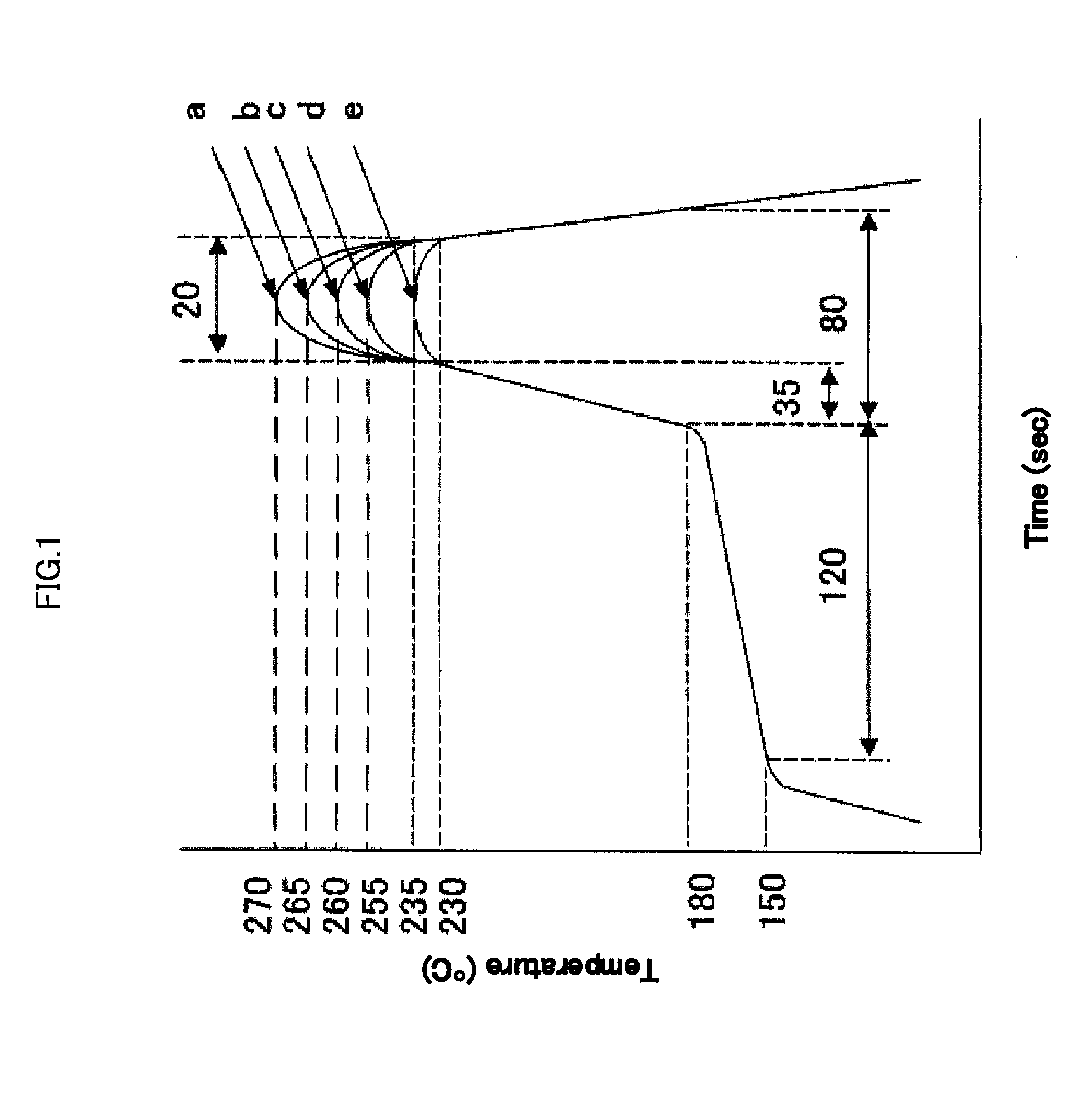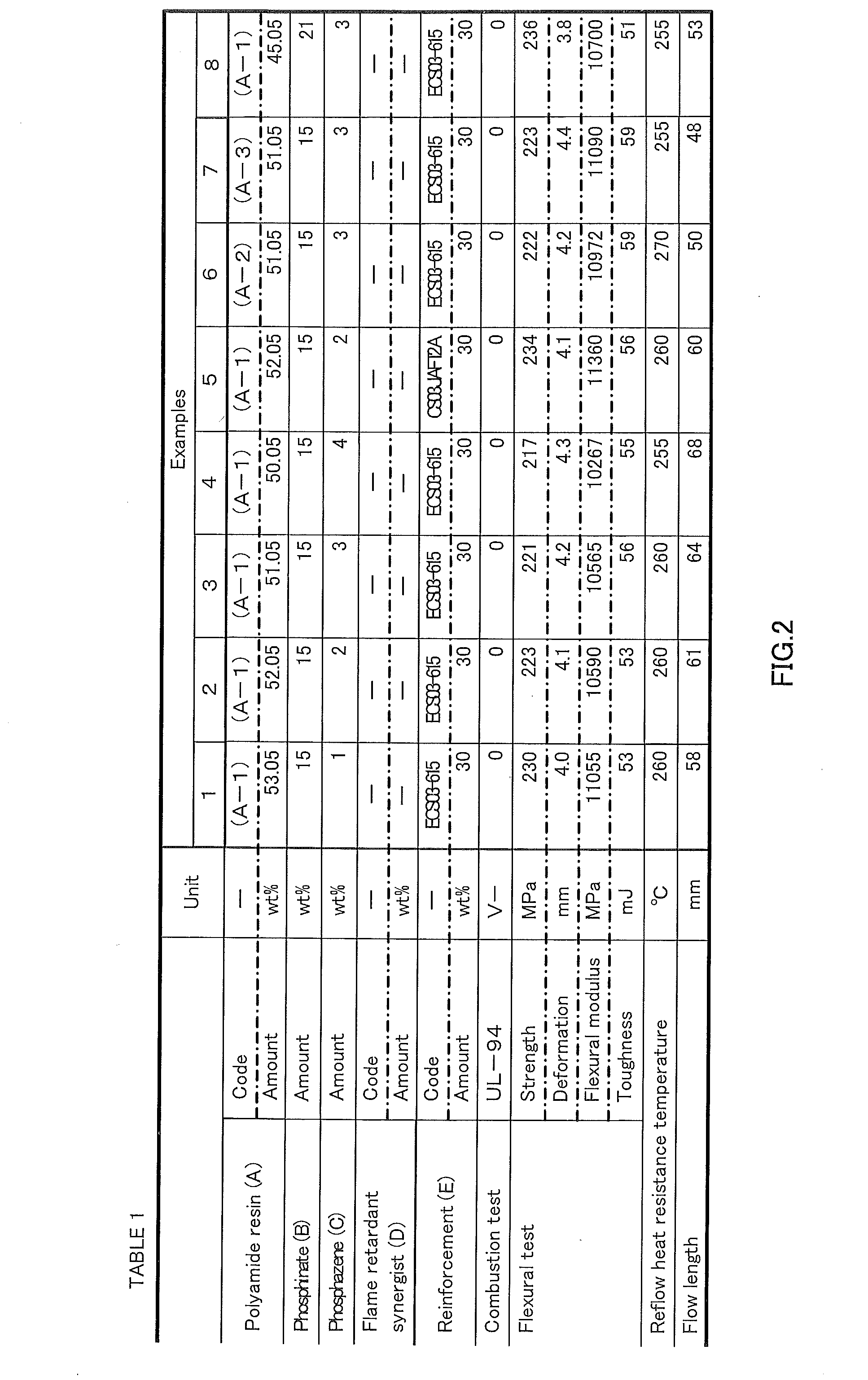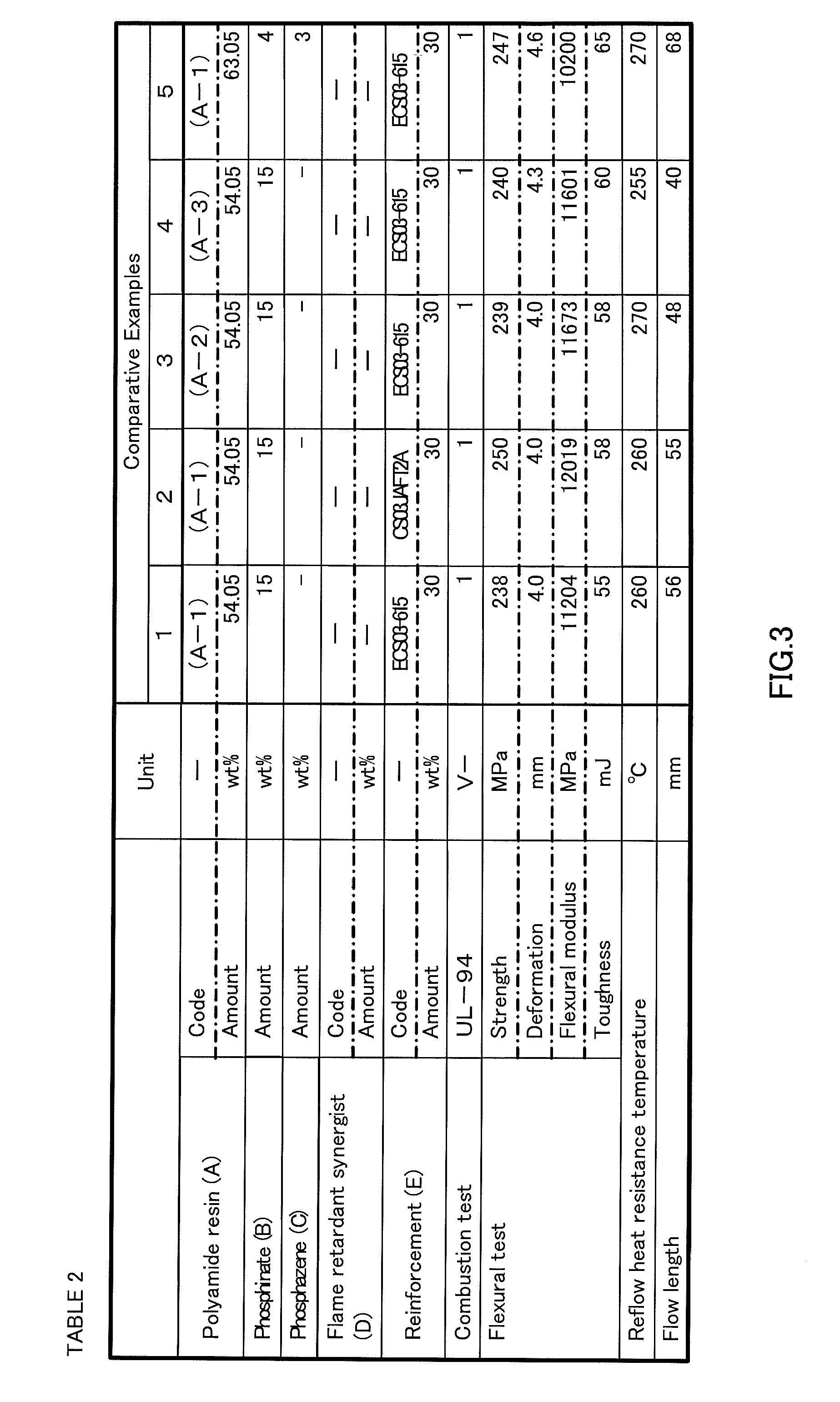Flame-retardant polyamide composition
a flame-retardant polyamide and composition technology, applied in the direction of coatings, etc., can solve the problems of insufficient heat resistance, inability to withstand high water absorption, and inability to absorb high water, and achieve excellent flow ability and toughness, excellent thermal stability, and stable flame retardancy
- Summary
- Abstract
- Description
- Claims
- Application Information
AI Technical Summary
Benefits of technology
Problems solved by technology
Method used
Image
Examples
examples
[0090]Hereinafter, the present invention will be detailed with reference to Examples, which however shall not be construed as limiting the scope of the present invention. In Examples and Comparative Examples, measurements and evaluations of physical properties are made as described below.
[0091][Intrinsic Viscosity [η]]
[0092]Intrinsic viscosity was measured in accordance with JIS K6810-1977. Sample solution was prepared by dissolving 0.5 g of polyamide resin in 50 ml of 96.5% sulfuric acid solution. The flow-down time (sec) of the sample solution was measured using a Ubbelohde viscometer at 25±0.05° C. Intrinsic viscosity [η] was then calculated using the following equation.
[η]=ηSP / [C(1+0.205ηSP)]
[0093]ηSP=(t−t0) / t0
[0094][η]: intrinsic viscosity (dl / g)
[0095]ηSP: specific viscosity
[0096]C: sample concentration (g / dl)
[0097]t: sample flow-down time (sec)
[0098]t0: flow-down time (sec) of sulfuric acid (blank)
[0099][Melting Point (Tm)]
[0100]The melting point of the polyamide resin was mea...
examples 1-12
and
Comparative Examples 1-5, and 8
[0154]The above components were mixed in proportions shown in Table 1 (FIG. 2), Table 2 (FIG. 3) and Table 3 (FIG. 4), and loaded in a vent-equipped twin-screw extruder which is set to 320° C., and melt-kneaded to produce respective polyamide compositions in the form of pellet. Physical properties evaluated for the obtained flame-retardant polyamide compositions are shown in Examples 1-12, Comparative Examples 1-5 and 8 of Tables 1-4.
PUM
| Property | Measurement | Unit |
|---|---|---|
| melting point | aaaaa | aaaaa |
| average particle diameter | aaaaa | aaaaa |
| aspect ratio | aaaaa | aaaaa |
Abstract
Description
Claims
Application Information
 Login to View More
Login to View More - R&D
- Intellectual Property
- Life Sciences
- Materials
- Tech Scout
- Unparalleled Data Quality
- Higher Quality Content
- 60% Fewer Hallucinations
Browse by: Latest US Patents, China's latest patents, Technical Efficacy Thesaurus, Application Domain, Technology Topic, Popular Technical Reports.
© 2025 PatSnap. All rights reserved.Legal|Privacy policy|Modern Slavery Act Transparency Statement|Sitemap|About US| Contact US: help@patsnap.com



